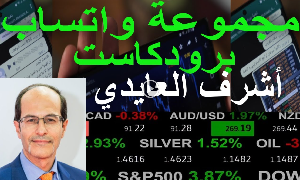Intraday Market Thoughts Archives
Displaying results for week of Jan 17, 2016Conflicting Signals on the Rebound
I lamented central bank over-optimism yesterday but a dose of dovishness came from a surprising place. Draghi cast aside the wait-and-see rhetoric from the ECB and cited downside risks and said they may 'reconsider' policy. The euro fell 150 pips on the headlines.
The other major story was a recovery in some of the most beaten-down currencies. The commodity bloc ripped higher with USD/CAD falling more than 200 pips. The antipodeans also made equally strong moves. They were joined by cable, which finished 60 pips higher on the day but 130 pips from the lows to create a minor bullish engulfing candle formation in what could be the first sign of a retracement.
Oil soared 6% despite another bearish US inventory report. Various talk around OPEC was probably less of a factor than dip buying or short covering.
Bonds also sold off as a calmer mood settled over risk assets. The one exception was the stock market. The S&P 500 was strongly higher midway through trading but the index finished just 10 points higher. Note that the past 6 consecutive Fridays or final trading days of the week have finished lower.
Bearish commentary continues to circulate with Soros saying he's short the S&P 500 and continuing to warn of trouble.
China is a major topic of conversation in Davos and Chinese VP Li said officials will continue to intervene in stock markets. That may be seen as a positive signal in Shanghai trading today. If so, it could set the stage for a continued relief rally and reversal of some of the massive moves we've had since the start of the year.
The calendar is light in Asia-Pacific trading except for the Nikkei Japan manufacturing PMI at 0200 GMT. The consensus is for a rebound to 52.8 from 52.6.| Act | Exp | Prev | GMT |
|---|---|---|---|
| Markit Manufacturing PMI (JAN) [P] | |||
| 51.1 | 51.2 | Jan 22 14:45 | |
| Nikkei PMI Manufacturing (JAN) [P] | |||
| 52.6 | Jan 22 1:35 | ||
| Eurozone Markit PMI Composite (DEC) [P] | |||
| 54.2 | 54.3 | Jan 22 9:00 | |
| Eurozone Markit PMI Manufacturing (DEC) [P] | |||
| 53.0 | 53.2 | Jan 22 9:00 | |
Central Bankers vs Markets
Central bankers continue to sound an 'all clear' signal while markets continue to sound the alarm in a divergence that can't last. The yen climbed once again Wednesday and the S&P 500 touched the lowest since April 2014. There are 4 Premium Trades currently in progress and an additional one will be released around the ECB decision. The chart below highlights the general picture for the S&P500 following Wednesday's 76% retracement in the index. Ashraf will post the technical implications of the charts' developments following Draghi's conference.
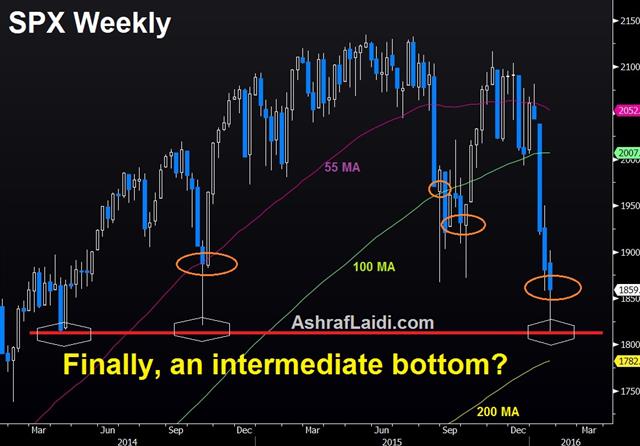
A full-on panic hit markets once again on Thursday and the S&P 500 broke below the Oct 2014 low to the worst levels in nearly two years. At the lows, the S&P 500 was down 69 points but it recovered alongside oil to finish down 22 points.
The US CPI report was slightly below estimates at -0.1% m/m compared to a flat reading expected but the core reading matched the 2.1% consensus.
Unruffled BoC
The main focus of the day was the Bank of Canada decision. The market was evenly divided on what might come with many believing falling oil and asset prices warranted a rate cut. Poloz thought differently and he wasn't dovish either. The result was a quick spike higher in the Canadian dollar.As oil and stock markets plunged, however, the move retraced but later when crude recovered, so did the loonie in an extremely volatile day of trading. The close lower in USD/CAD ended a 13 day streak of gains.
What's striking is how Poloz's reading on the economy differs significantly from markets. He remains optimistic on non-resource exports and the US economy. He's not alone. Other central bankers appear to be seeing a fear different world than market participants.
If markets are right, many central bankers will suffer (more) hits to their credibility. The Fed is in a particularly tough position and the US dollar also has the most to lose from the Fed scaling back expectations of a hike. At the moment, the Fed is in a blackout period ahead of the FOMC.
ECB is next
Up next is the ECB. A report from MNI Wednesday said there would be no serious discussion of new measures and that's not a surprise. The question is: Will Draghi also ignore the signals from markets and signal confidence in the economy?There is a good chance he will and that may help the euro in the short term. But if markets continue to wilt, how long can that optimism last?
Three BoC Scenarios
USD/CAD rallied late to finish higher once again in a remarkable streak of 13 consecutive daily gains for the pair. That sets the stage for Wednesday's razor thin Bank of Canada decision. We take a closer look at three potential outcomes. The short GBPAUD trade was closed at 2.0435 for a 335-pip profit, leaving three trades in progress. The latest Premium Video, titled "After the 052008 Parallel" is now up on the Premium section. The Video Analysis for trades & charts has been posted for Premium susbcribers below, titled "After the 052008 Parallel"
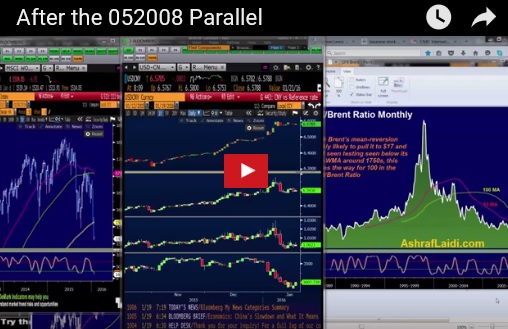
At the start of the year, the BOC decision was thought to be a foregone conclusion. Poloz had been optimistic in his recent comments, suggesting that manufacturing and other non-commodity exports were beginning to pick up the economic slack from resources.
Resource prices have plummeted. Since the December 2 BOC meeting oil is down $13, or 32% and that's made tomorrow's BOC decision intriguing. The OIS forward market prices a 49.2% chance rates are left unchanged and a 50.8% chance of a cut.
Here are the three scenarios:
1) A cut
This is what Poloz should do. The drop in oil prices leaves Canada extremely vulnerable to a shock and if/when it hits, then it will be too late for the BOC to ride to the rescue.The closest thing Poloz did to dropping a hint when he spoke on Jan 7 was not mentioning that the current policy stance is appropriate.
High Canadian housing prices are a reason not to lower interest rates but at this point, that battle is better left to government regulators. The damage might not be that great and the kneejerk may fizzle because it's likely to be accompanied by soothing words on the economy.
2) No move but signalling a cut
Most central banks like to drop hints before moves but Poloz works from a different playbook. Poloz's style is to project optimism until the news becomes overwhelming and then he reacts swiftly. At least that's what he did last year.He could be worried that yet-another surprise cut would spark concern in the broader economy and undermine confidence. A sharp drop in USD/CAD on the 'no cut' headlines may be a buying opportunity because the promise of a cut is almost as good as the real thing.
3) No cut, no hint
With bets against the Canadian dollar soaring, this would spark a harsh retracement and that's what may cause some CAD buying in the leadup to the 1500 GMT decision.The economic data in Canada has been solid, especially jobs numbers. Poloz has been a big believer in the power of the weak Canadian dollar and he may prefer to let that do his work while keeping some power dry. On a risk-reward basis, there's a case for selling USD/CAD now and trading the headlines on the decision.
The Blame Game, China GDP next
If you don't know what's happening – blame China. If that doesn't work, blame the Fed. The overwhelming majority of market watchers are pointing the finger at one of those two, but what if they're wrong. Premium Insights subscribers look out for a new trade due ahead of the China's barrage of economic data due at 02:00 GMT/London.
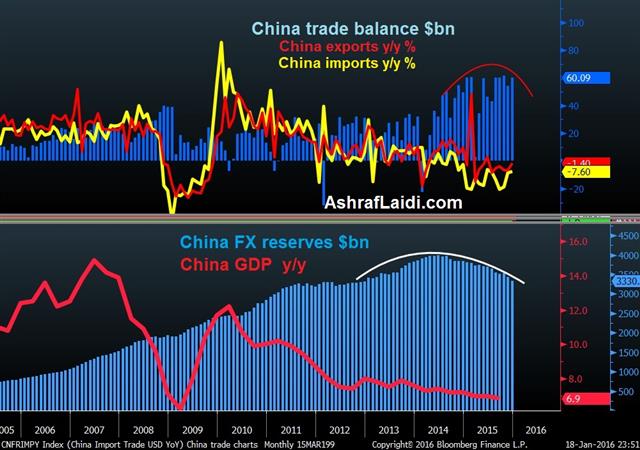
The Blame Game
If you don't know what's happening – blame China. If that doesn't work, blame the Fed. The overwhelming majority of market watchers are pointing the finger at one of those two, but what if they're wrong.Markets were relatively quiet to start the week as the US observed a holiday. A modest rebound in risk assets was mostly snuffed out late in the day with the commodity currencies and cable sliding once again. Some of the GBP selling came after the BOE's Vlieghe urged patience before raising rates and then entertained the idea of a cut.
In the bigger picture, markets remain confused and there is no sense that the turmoil will abruptly end. Here are some questions about the popular ideas about what's driving the market:
Yuan weakness
Early in the year, the blame for market turmoil was placed on the yuan but it's risen now risen for 7 straight days and is unchanged on the year. Ashraf explained all the mechanics of CNY vs CNH dynamics and their implications on risk appetite, currencies, commodities and equity indices in a special 19-minute video on Jan 12 titled "Special Chinese Yuan Video".China's economy
There has been nothing alarming or abrupt from the Chinese economy. The questions today are the same ones we've heard for the past 3 years. We will get a better sense of growth when GDP numbers are released today at 0200 GMT (Q4 consensus is +6.8%) but the data is unreliable. Dec retail sales and industrial production are also due at the same time.Chinese stocks
China's stock market is the laggard and was the first to tip. But remember that the PE in Chinese stocks is 57. By many measures it was severely overvalued and buying via official avenues may have skewed the market and the latest fall could be more correlation than causation. What may be hurting sentiment more than the data is the recent haphazard and changeable approach to policymaking, including official stock buying.The Fed
We believe that the Fed is wrong about coming inflation and growth and that rate hikes are a mistake. The wrong-footedness is hurting sentiment but it doesn't account for the rout in markets.What's Left Out
Commodities. The common thinking is that this is a demand-side decline and commodities are reacting. But what if it's a matter of oversupply? As prices fall in commodity exporters, it hurts those economies and demand suffers as a result. Meanwhile, there are worries about severely overleveraged commodity companies in the bond market.This approach is largely left out of the discussion but it helps to connect the dots better than other approaches.
| Act | Exp | Prev | GMT |
|---|---|---|---|
| Retail Sales (DEC) (y/y) | |||
| 11.3% | 11.2% | Jan 19 2:00 | |
| Industrial Production (DEC) (y/y) | |||
| 6.0% | 6.2% | Jan 19 2:00 | |
Oil Fears Mount, JPY Longs Increase
Sanctions on Iran were lifted in what will bring fresh oil to the market while China took fresh steps to chase out yuan shorts. In early trading, USD/CAD is significantly higher in early trading as it attempts to rally for a twelfth consecutive day; the yen leads the way. The calendar is busy in Asia-Pacific trading with the US closed for a holiday. CFTC positioning showed more yen buyers. On Friday, GBPJPY was closed for 201 pip gain.
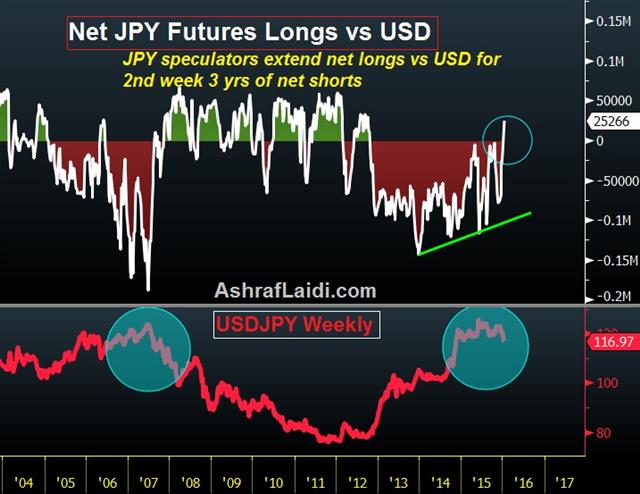
Early-week talk is centred on sharp falls in Middle Eastern stock markets in reaction to oil prices declines and after sanctions were lifted against Iran. The Iranian government says it will immediately ramp up exports by 500k barrels per day. The new supply is entirely expected but with the oil market in freefall, it's the kind of headline that will cause more selling.
The other spot to watch early is China after a report that the government will force Chinese banks with branches offshore to respect reserve ratios for the offshore yuan. Last week's HIBOR flap highlighted how speculators were able to cheaply bet on a falling yuan and that has been blamed for higher volatility. The latest measures don't go into effect until Jan 25 so there may not be a short squeeze but it's yet another signal that China doesn't want to be seen aggressively devaluing.
On the weekend Chinese Premier Li Keqiang said 2015 was about 7% in what is seen as a potential leak of Tuesday's GDP report. The focus today is on Australia and Japan. At 2330 GMT, the Australian TD Securities inflation report is due. The prior reading was +1.8% y/y.
At 0430 GMT, Japan's tertiary industry index is due along with final Nov industrial production numbers. Neither is likely to be a market mover but at 0030 GMT, Kuroda delivers a speech.
Aside from the daily fixes, the long Chinese data on the docket is the property price report due at roughly 0130 GMT.
Commitments of Traders
Speculative net futures trader positions as of the close on Tuesday. Net short denoted by - long by +.EUR -146K vs -161K prior JPY +25K vs +4K prior GBP -31K vs -30K prior AUD -12K vs -14K prior CAD -59K vs -60K prior NZD +2K vs +2K prior
The lack of interest in fresh AUD and NZD shorts shows the effect of negative carry but the unwillingness to bet against GBP is a surprise. Yen specs switched to long for the first time since Oct 2010 last week and they are beginning to pile in.
| Act | Exp | Prev | GMT |
|---|---|---|---|
| TD Securities Inflation (DEC) (m/m) | |||
| 0.1% | Jan 17 23:30 | ||
| TD Securities Inflation (DEC) (y/y) | |||
| 1.8% | Jan 17 23:30 | ||
| Tertiary Industry Index (NOV) (m/m) | |||
| -0.6% | 0.9% | Jan 18 4:30 | |
| Industrial Production (NOV) (m/m) | |||
| 1.4% | -1.0% | Jan 18 4:30 | |
| Industrial Production (NOV) (y/y) | |||
| 1.6% | Jan 18 4:30 | ||
| House Price Index (DEC) | |||
| 0.9% | Jan 18 1:30 | ||

